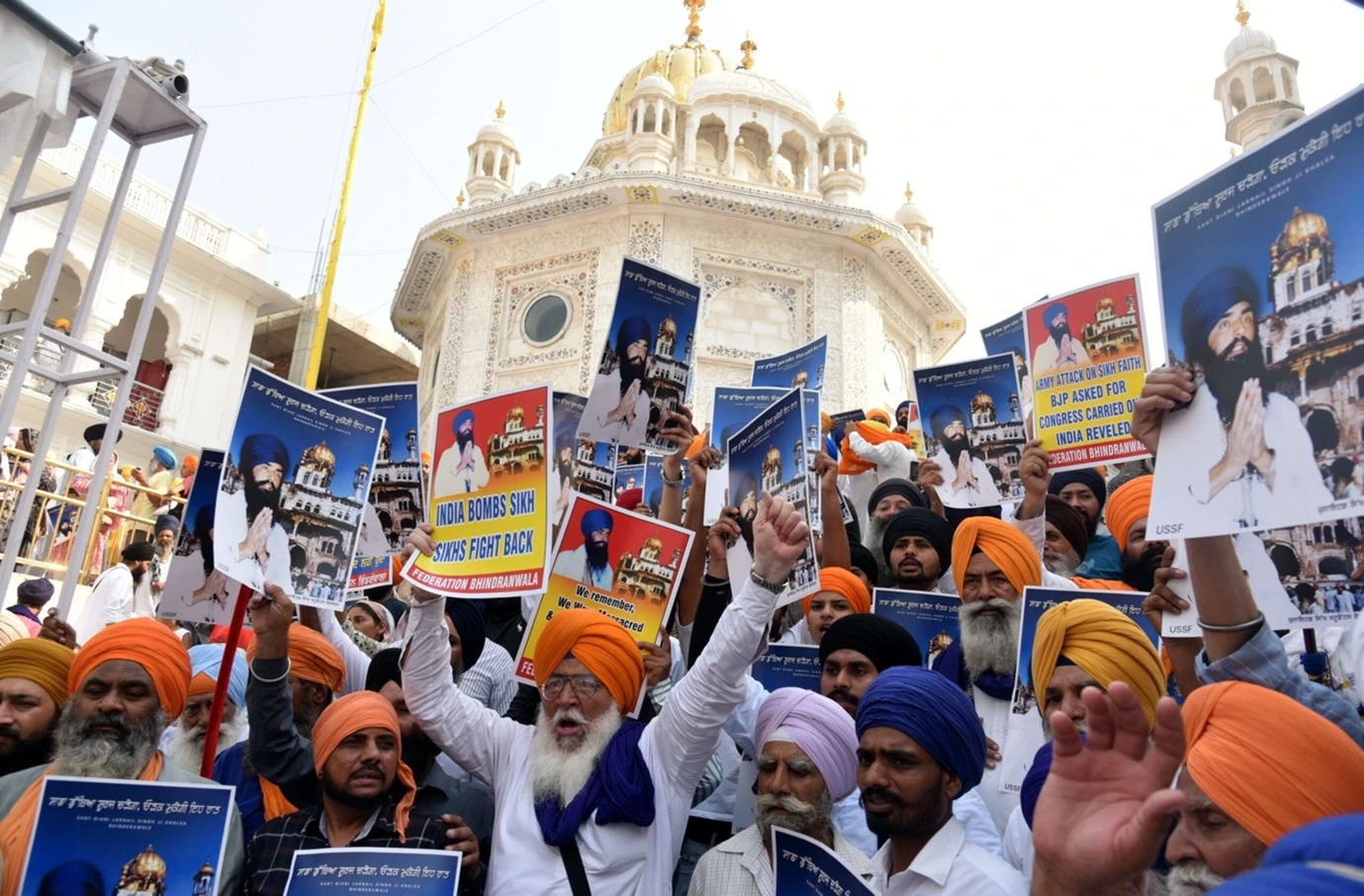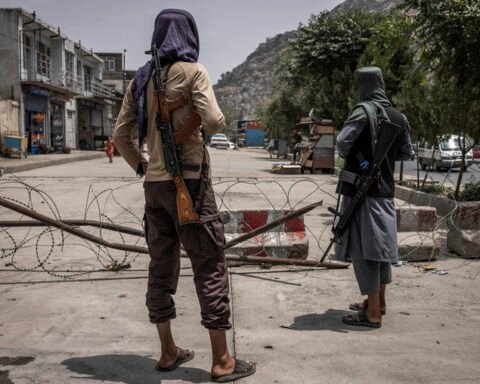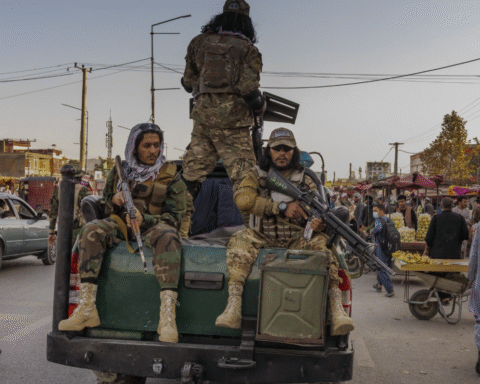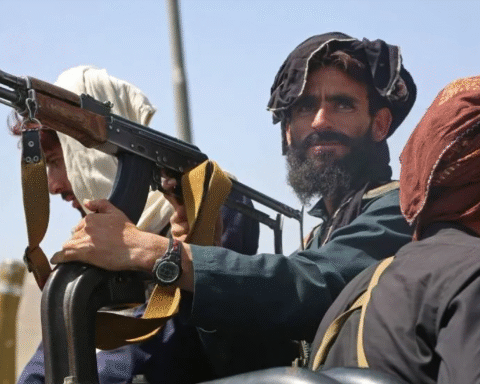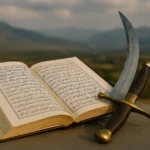Forty-one years after Operation Bluestar, many Sikhs still have a strong desire to fight back. On the sad anniversary of one of the worst times in Sikh history, the community’s message is clear: No more silence, no more erasure, there will be resistance. Sikhs all over Punjab and the world are remembering what has been called the “Decade of Remembrance of Persecution” from June 1 to June 10. In this tense time, pro-Khalistan slogans that used to shake Indian politics have once again echoed from the heart of Sikhdom, the Akal Takht, reminding everyone that the call for Khalistan is not a thing of the past but a cry that still rings out with passion and defiance.
On June 6, 2025, there was a complete strike in many parts of Punjab. This showed how powerful and far-reaching the call from Dal Khalsa, one of the main Sikh rights groups, was. The group put together a “Genocide Remembrance March” that started at Gurdwara Burj Phula Singh and ended at the Akal Takht. Thousands took part in the march, not just as a symbolic act of protest, but also to show their unwavering support for the martyrs’ memory and the larger political goals that came out of the traumas of 1984.
The phrases “Khalistan Zindabad” and “Long live Bhindranwale” weren’t just on banners or in speeches; they echoed loudly throughout the Golden Temple complex. Supporters waved Khalistani flags and pictures of Sant Jarnail Singh Bhindranwale, the militant leader who was killed and whose picture has become a symbol of resistance for many Sikhs. Having leaders like Sardar Simranjit Singh Mann, a former Member of Parliament and head of the Shiromani Akali Dal (Amritsar), and his friend Dhyan Singh Mand made the movement more political and legitimate.
The Akal Takht, the highest seat of temporal authority for Sikhs, may have had the most powerful symbolism. There, these dissenting voices were not only allowed but also amplified. Harjinder Singh Dhami, the President of the Shiromani Gurdwara Parbandhak Committee (SGPC), openly paid tribute to Sant Bhindranwale and all those who died during Operation Bluestar. He stressed that the cause they died for is still very much alive in the minds of the Sikh people.
Giani Kuldip Singh Gargaj, the acting jathedar of the Akal Takht, made this point even stronger during his Ardas (prayer). He called for all Sikh groups to come together to demand the release of “Bandi Singhs,” Sikh political prisoners who are still in Indian jails even though they have served their sentences. The Khalistan movement is using their continued detention as a rallying cry, and it is seen as more than just a legal issue; it is also seen as a spiritual and moral injustice that hurts Sikh dignity.
The Sikh community is still hurting from the Indian Army’s storming of the Golden Temple in June 1984, which was part of Operation Bluestar. The operation, which was meant to get rid of militants hiding in the holy complex, killed hundreds, if not thousands, of civilians and destroyed Sri Harmandir Sahib and Akal Takht beyond repair. To many Sikhs, it was not just a military strike but an act of sacrilege, a desecration of the holiest of their shrines and an attempt to decimate their spiritual and political leadership.
Those wounds are still not healed today. The memory of the violence is not just a thing of the past; it is still very much alive in the minds of people who refuse to forget. That memory is directly challenged by every slogan shouted, every flag waved, and every prayer offered on June 6. It is also a rejection of the idea that we can move on without taking responsibility.
This feeling was felt in a real way all over Punjab. Shutdowns happened in towns and cities, and processions filled the streets. It wasn’t just activists or extremists who took part in the observance. Regular Sikhs, students, families, and elders did too. The fact that groups like the Akali Dal (Amritsar), the Panthsevak Jatha, and different Sikh student federations took part showed a level of unity that is very rare in Sikh politics, which is usually very divided. For once, the lines between different ideologies were blurred by a common goal: to remember, resist, and reassert.
Delhi may try to downplay the events, but the revival of this movement sends a clear message: the idea of Khalistan, which some people see as a failed or fringe goal, is still important to many Sikhs on an emotional, spiritual, and political level. It may or may not lead to a new armed movement or political campaign, but it shows a deep sense of anger and alienation that is still growing in the Indian Union.
This is a time of truth for the Indian state. The idea of self-determination has spread beyond Punjab. India’s centralized government is under threat from many places, including the insurgent hills of Kashmir, the restless lands of the Northeast, and even the Naxalite-influenced heartlands. But Punjab is different. It is the land of the Green Revolution, brave soldiers, and a strong economy. But for many Sikhs, it is also the land of tears, betrayal, and martyrdom.
This year’s wave of remembrance isn’t just a seasonal thing. It is a part of a larger awakening in culture and politics. More and more young Sikhs are learning about their history, questioning stories, and reconnecting with figures like Bhindranwale, who is seen by many in Punjab as a hero who fought against tyranny, even though he is controversial to many outsides of Punjab. This new way of looking at history, which is being spread by social media, is creating a new generation that is politically aware and spiritually strong.
We still don’t know how the Indian government will react. Will it address the issues that are being brought up, such as the long-overdue release of Bandi Singhs? Or will it keep up its policy of censorship, calling any disagreement extremism? The choice it makes will affect not only Punjab but also the whole of Indian democracy for a long time.
In the end, June 6, 2025, was more than just a day to remember; it was a day to face the truth. The Akal Takht, the centre of Sikh power, once again became the place where a strong call for justice, freedom, and truth was made. As people chanted “Khalistan Zindabad” above the holy walls of the Golden Temple, it was a reminder that the past is not buried, and the future is still up for grabs.

